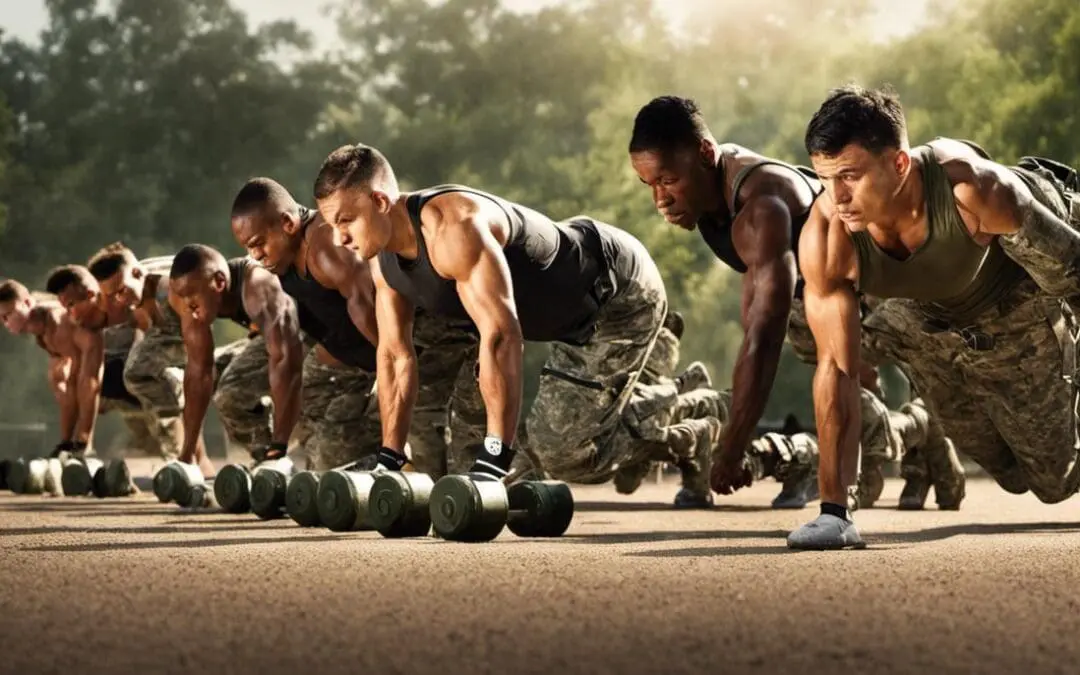The physical fitness standards and demands of army personnel vastly differ from those one typically encounters in everyday life. The reasons for this go beyond mere physical health and assistance in combat scenarios; they impact every facet of a soldier’s life from mental wellbeing, resilience, discipline, reduction in injury rates, to shaping an individual’s approach to life itself. Through a complex myriad of fitness components, from cardiovascular endurance and muscular strength to adaptability and body composition, the army sets forth a rigorous but rewarding path for those in service. This journey is not embarked upon without guidance, as structured training programs and dietary plans pave the way to achieving fitness goals. Fitness standards are set, implementations are systematically structured, and every soldier’s progression is closely monitored with tests and assessments, the cornerstone of career progression and recognition.
The Importance and Objectives of Army Physical Fitness
The Necessity of Army Physical Fitness
Physical fitness is a fundamental and crucial aspect of military service that continues to be emphasized due to its stunning significance. It serves as the backbone of Army readiness and is linked directly to a soldier’s capacity to conduct operations. Physically fit soldiers are able to bear heavier loads, march longer distances, and respond more quickly to emergencies, boosting overall combat performance and readiness. As the intensity and physical demands of warfare escalate, the extent to which a soldier’s physical fitness can make the difference between success and failure in the battlefield also amplifies.
Reducing Injury Rates Through Physical Fitness
Beyond the battlefield, maintaining physical fitness is of utmost importance as it leads to a substantial reduction in injury rates among soldiers. As with any active profession, the risk of injury in the army is omnipresent; however, studies have consistently shown that soldiers with a high level of physical fitness are less likely to be injured. Robust physical conditioning enhances musculoskeletal resilience, reduces the susceptibility to strains, pulls, and other injuries, and also speeds up recovery time in the event of an injury.
Promoting Health and Wellness in the Army
The army’s focus on physical fitness extends beyond combat readiness and injury prevention. At its core, physical fitness is about health and wellness. Regular physical activity aids in the prevention of a wide range of diseases including heart disease, diabetes, and certain types of cancer. Furthermore, it plays a critical role in managing mental health, reducing symptoms of depression and anxiety, and improving mood. In this regard, the army physical fitness initiatives aim to ensure that soldiers are equipped to maintain their overall health and well-being, during, and beyond their service years.
Improving Morale and Discipline with Physical Fitness
Physical fitness is not just about physical strength or endurance; it is equally about mental toughness, discipline, and morale. Rigorous and consistent training can instill a sense of discipline and personal accomplishment. Furthermore, regularly achieving fitness goals fosters self-esteem and confidence among soldiers. Physical readiness also leads to improved morale, as soldiers who are fit and prepared for the physical challenges ahead are more likely to report higher levels of morale compared to their less fit counterparts.
Physical fitness in the army is not confined to merely achieving benchmarks or passing a test. It delves deeper into an encompassing approach, focusing on improving soldier’s physical preparedness, health and mental resilience. This strategy aims at creating a robust and well-rounded life for personnel in the military. It reflects the crucial role physical fitness plays and the objectives it intends to meet in the army.
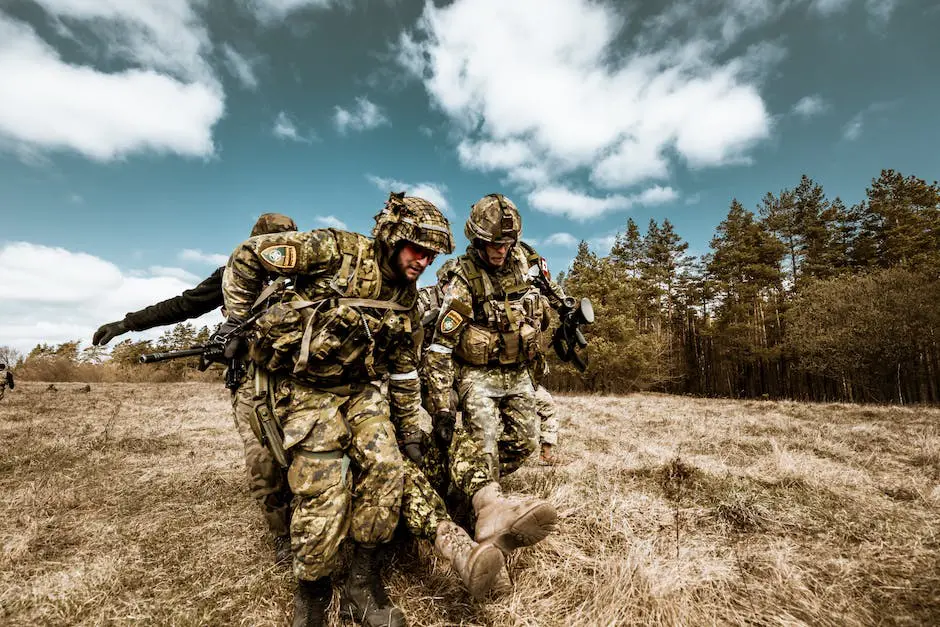
Components of Physical Fitness in the Army
Importance of Cardiovascular Endurance in Military Life
In the context of physical fitness, cardiovascular endurance is highly prized in the army. It describes the body’s capacity to transport oxygen and nutrients to various tissues and eliminate waste over extended periods. A soldier with high cardiovascular endurance can withstand physically challenging tasks for a prolonged period without succumbing to fatigue. This ability is indispensable in the military, given the requirement for soldiers to engage in long marches and prolonged combat situations.
The U.S. Army actively nurtures cardiovascular endurance via training programs incorporating lengthy sessions of running, swimming and cycling at varying intensities. Besides regimented training, soldiers are also motivated to partake in regular aerobic activities to enhance their cardiovascular health. A prime feature of the Army Combat Fitness Test (ACFT) places emphasis on cardiovascular endurance, evaluating the readiness of soldiers to deal with physically strenuous combat scenarios.
Muscular Strength in the Army
Muscular strength, the maximum amount of force a muscle or group of muscles can exert, is another vital component of Army fitness. The Army tasks demand considerable physical strength and power. Whether it involves carrying heavy equipment over difficult terrain, lifting and moving wounded comrades, or scaling walls, a soldier’s muscle strength can be the difference between success and failure.
To boost muscular strength, the Army incorporates resistance and weight training into their routines. Functional fitness programs, which mimic the movements performed during a soldier’s daily tasks or in combat situations, are also widely practiced.
Flexibility in the Army
Flexibility refers to the ability to move joints through their complete range of motion. It can enhance a soldier’s performance and reduce the likelihood of injury. Whether dodging obstacles or crawling through confined spaces, soldiers must be flexible enough to adapt to unpredictable scenarios.
The Army emphasizes stretching exercises designed to enhance flexibility. This includes both static and dynamic stretching routines, each aimed at different aspects of flexibility. The Army has also incorporated elements practices like yoga into training, recognizing their potential to enhance flexibility and aid in the recovery from intense physical activities.
Body Composition in the Army
Body composition, or the ratio of body fat to muscle, is also a key aspect of physical fitness in the Army. The Army Body Composition Program emphasizes the importance of lean body mass for optimal performance and health. It aims to ensure that all soldiers have a body composition that equates to good health, performance, and appearance.
Certain percentage of body fat must not be exceeded. The Army Regulation 600-9 provides the methods to measure and the standards which vary by age and gender. The Army monitors soldiers’ body composition as part of their physical fitness assessment. If a soldier exceeds the body fat maximum, they enter a program designed to help them achieve and maintain a healthier body composition.
Physical Fitness Science in the Army
Behind all these components of Army physical fitness, there is a scientific foundation. The Army’s fitness program draws on a wide array of scientific disciplines, from physiology and kinesiology to nutrition and psychology. All these collectively contribute to understanding how to train soldiers to be physically fit, resilient, and ready for all tasks they will face.
Each component of fitness contributes uniquely to overall performance and well-being. Cardiovascular endurance, for example, can enhance soldiers’ ability to cope with the stress of prolonged physical activity. Moreover, it is related to lower risk of chronic diseases like heart disease and diabetes. Muscular strength and endurance allow soldiers to continue performing physically demanding tasks well into periods of sustained combat. Flexibility reduces susceptibility to injury and facilitates rapid, agile movement. Finally, maintaining a healthy body composition contributes to overall health, physical performance, and military appearance.
The Holistic Approach of the Army to Physical Fitness
The army embraces a comprehensive approach to physical fitness, catering to mission-specific needs of the soldiers. The concept underpinning this approach is to equip military personnel with a physical regime that both assists their demanding roles and promotes a healthy lifestyle.
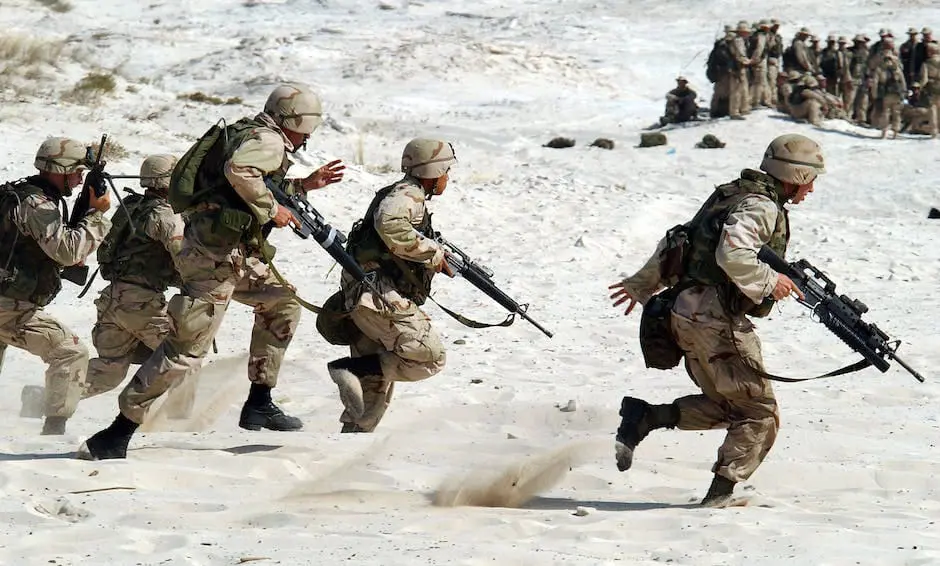
Training Methods and Programs for Army Fitness
Exploring Army’s Physical Training Regimes
The U.S. Army deploys various training techniques to keep their soldiers in optimal physical health, with a concentrated focus on aerobic capacity and strength conditioning. These adopted methods range from enduring runs, circuit training, high-intensity interval training (HIIT), plyometrics, to resistance training.
Endurance runs are a routine part of military training to bolster cardiovascular health. Such fitness becomes vital for soldiers who might be required to cover extensive distances by foot. Circuit training, where a series of exercises are performed one after the other, offers a comprehensive workout improving muscular strength, cardiovascular health, and coordination. This training effectively fuses strength workouts with aerobic activities.
The U.S. Army has also embraced HIIT, which gained traction in recent times. Here, bouts of intense exercise episodes are alternated with less intense phases of recovery. This method boosts both aerobic and anaerobic fitness, potentially enhancing overall physical performance of the soldiers.
Another integral part of military physical training is resistance training. It’s aimed at boosting muscular strength and endurance, vital for a soldier’s capacity to lift heavy items, carry gear, or hold a combat-ready posture.
Creating Individualized Training Plans
The army’s approach to training is unique in that it accounts for the age, gender, and personal capacities of each soldier. The design of each individual’s training regimen is a careful process, aiming to provide challenging exercises while also preventing strain and injury. This is accomplished through comprehensive health and physiological assessments which inform the personalized fitness plans.
The focus for younger recruits lies in establishing basic physical fitness and skill levels before gradually introducing strenuous workouts. This staged progression guarantees the appropriate adjustment and aids in safeguarding the recruits from possible injuries.
For seasoned soldiers, adjustments are made to their workouts to keep fitness levels high while mitigating injury risks. This could involve replacing long runs with brisk walks or bike rides, transitioning from heavier weights to resistance bands or lighter dumbbells, and integrating more flexibility and core training exercises.
Programs are also adapted to accommodate gender specific biological differences. For instance, additional or alternative routines may be added to a female soldier’s program to enhance hip and core strength, which aids in preventing injuries.
Beyond these strategies, the army also collaborates with sports and medical professionals to continually refine their physical training programs. This constant adaptation and progression secures high fitness standards, producing a highly competent and resilient army prepared for all types of demands and challenges.
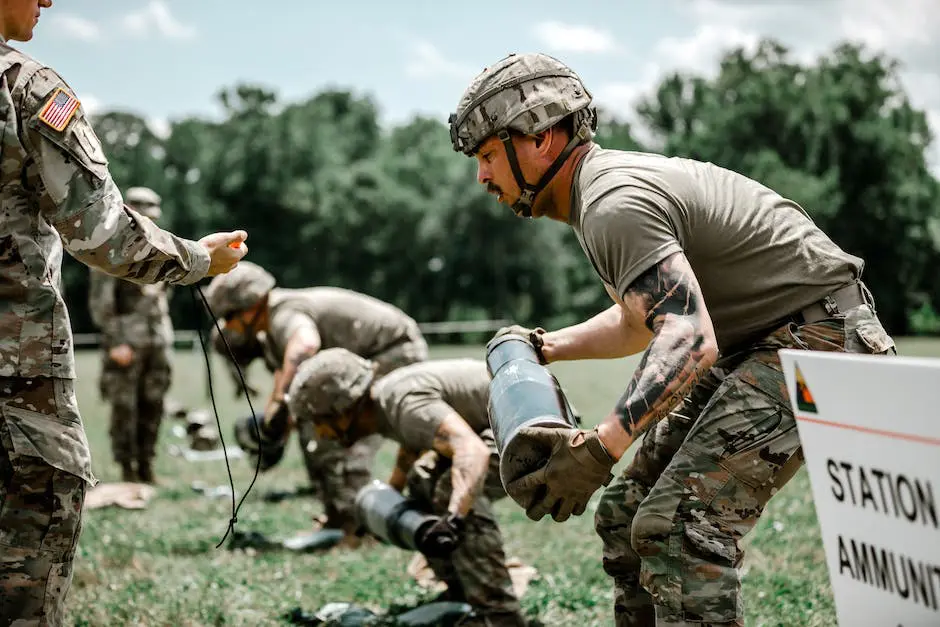
Diet and Nutrition in the Army Physical Fitness
The Influence of Nutrition on Army Physical Fitness
The interplay between physical training and appropriate nutrition is essential in the context of the army’s fitness plan. Diet is pivotal as it provides the required fuel for arduous workouts and supports overall soldier health. The army’s meal plans are meticulously crafted around balanced portions of proteins, carbohydrates, and healthful fats to meet the high-energy demands of army life and physical training.
The daily calorie requirement for a soldier typically ranges between 3,000 to 4,500, depending on size, gender, and level of physical activity. This is above the common civilian recommendation of 2,000 to 2,500 calories. An army diet pursues a well-rounded nutrient intake by incorporating a variety of foods such as lean proteins, whole grains, fruits, vegetables, and dairy – essentially aiming to ensure soldiers remain in peak physical condition.
Hydration and Army Physical Fitness
Hydration is crucial to maintaining army physical fitness due to strenuous activity that leads to loss of water and essential electrolytes through sweating. Lack of proper hydration can lead to dehydration fatigue, muscle cramps, and heat illnesses. Thus it is advised that soldiers drink plenty of fluids, especially water throughout the day. In addition to regular water intake, rehydration and recovery drinks are often used to replenish lost electrolytes and accelerate recovery post-training or missions.
Meals Ready to Eat – MREs
MREs, or Meals, Ready to Eat, are pre-packaged meals designed to provide field nutrition for the armed forces. These meals are fortified with essential nutrients required for optimal performance, ensuring a high energy intake, even in harsh, low-resource environments. Each MRE has approximately 1,200 to 1,300 calories, and includes a main entree along with sides such as fruits, crackers, and spreads. They also include drinks like an electrolyte beverage powder or coffee.
Role of Dietary Supplements
Supplement usage is common in the army, as it may provide additional nutrition that might not be gotten from meals alone, especially during rigorous physical activities. Army-approved dietary supplements can help meet the elevated nutritional requirements, help improve performance, shorten recovery periods, and boost overall health.
However, the army is stringent about the use of supplements, considering the variety of quality and potency available in the market. There are established guidelines on which supplements are safe and effective to use, based on rigorous examination by qualified dietitians and physicians. Only certain supplements, well researched and proven to be safe, such as protein, multi-vitamins, omega-3 fatty acids, and carbohydrate supplements, are generally accepted.
Soldiers are educated on the importance of getting nutrients primarily from whole food sources and to use supplements only to complement, not replace, a balanced diet. There’s also a strong emphasis on proper education and constant updating on using dietary supplements safely and effectively.
An integral aspect of maintaining army physical health involves maintaining a balanced diet and optimal nutrition level. In order to achieve this, the army provides its soldiers with the necessary resources to fulfill their dietary needs. Alongside, it also offers education to understand the crucial importance of proper nutrition, maintaining hydration levels and the safe use of dietary supplements.

Army Physical Fitness Standards and Assessments
Fitness Standards in the U.S. Army
To ensure its personnel are in peak physical condition and can effectively cope with the strenuous demands of duty, the U.S. Army employs strict physical fitness standards. These standards are determined by factors such as age, gender, and specific job requirements. Adherence to these standards is fundamental as they are designed to safeguard the health and readiness of army members. A comprehensive and balanced approach to physical readiness forms the cornerstone of these standards that reinforce both the physical and mental resilience of soldiers.
U.S. Army’s Physical Fitness Test (APFT)
The Army Physical Fitness Test (APFT) has been the benchmark for assessing the physical fitness of Army personnel for many years. The APFT includes three events: a two-mile run, two minutes of push-ups, and two minutes of sit-ups, with a maximum of 300 points possible across these challenges. Points are awarded based on performance and age category, with a higher number of repetitions or faster times earning more points. To pass the APFT, soldiers must score at least 60 points in each event, resulting in a minimum cumulative score of 180 out of 300.
Army Combat Fitness Test (ACFT)
Iintroduced in 2019, the Army Combat Fitness Test (ACFT) is intended to replace the APFT and is currently in its initial phases of implementation. Comprising six events designed to better simulate combat-related tasks, the ACFT aims to offer a more comprehensive assessment of a soldier’s fitness. The events are the three-repetition maximum deadlift, the standing power throw, the hand-release push-up, the sprint-drag-carry, the leg tuck, and the two-mile run. Scores can range from 0 to 600, with 60 points as the minimum standard for each event, just like the APFT.
Career Implications of Army Physical Fitness Tests
Performance on the APFT and ACFT is a significant factor in determining promotions and career advancement in the Army. Scores from these tests directly influence a soldier’s overall Service Profile, which carries weight during promotion boards. High scores can indicate discipline, commitment, and readiness – traits regarded highly in leadership roles. On the other hand, continual poor performance or failure to meet minimum standards can result in administrative action or denial of promotion.
Shift from APFT to ACFT
The transition from the APFT to the ACFT reflects a push by the Army to foster a more combat-ready force. The ACFT places greater emphasis on movements and tasks relevant to combat operations, such as heavy lifting and movement under fire. While the APFT will continue to be used alongside the ACFT during the transition period, eventually, all service members will be required to take the ACFT instead.
Gender-neutral Fitness Testing Protocol
The ACFT also represents a shift toward a gender-neutral fitness testing protocol. By focusing on tasks directly tied to combat readiness rather than minimum fitness standards segmented by gender, the Army seeks to ensure that all soldiers can meet the physical demands of modern warfare, regardless of gender.
In conclusion
The Army’s physical fitness standards and assessments are crucial components of its readiness and effectiveness as a fighting force. They are designed to ensure that all service members can meet the physically demanding requirements of military duty and are connected directly to career opportunities within the Army. The ongoing transition from the APFT to the ACFT aims to improve this link further.
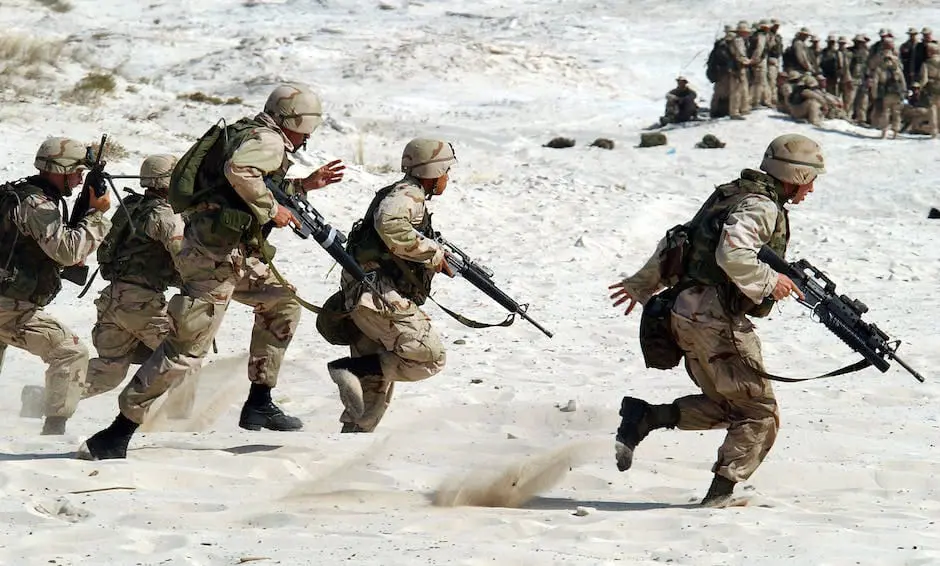
The intricate lattice of army physical fitness paints a holistic picture of not only the physical requirements but also the mental and emotional requisites that complete the soldier’s persona. Every facet of fitness is outlined, every meal accounted for and workouts tailored to individual capabilities, in harmony with scientifically backed reasons to maintain a particular level of fitness. Physical fitness is not an isolated army criterion; it’s a lifestyle, an all-encompassing approach that sustains the demanding life of an army individual, from the barracks to the battlefield. In the end, the army’s physical fitness narrative underscores a compelling point: Readiness isn’t solely about being ready to fight; it is about being ready to serve, to endure, and to prevail.

